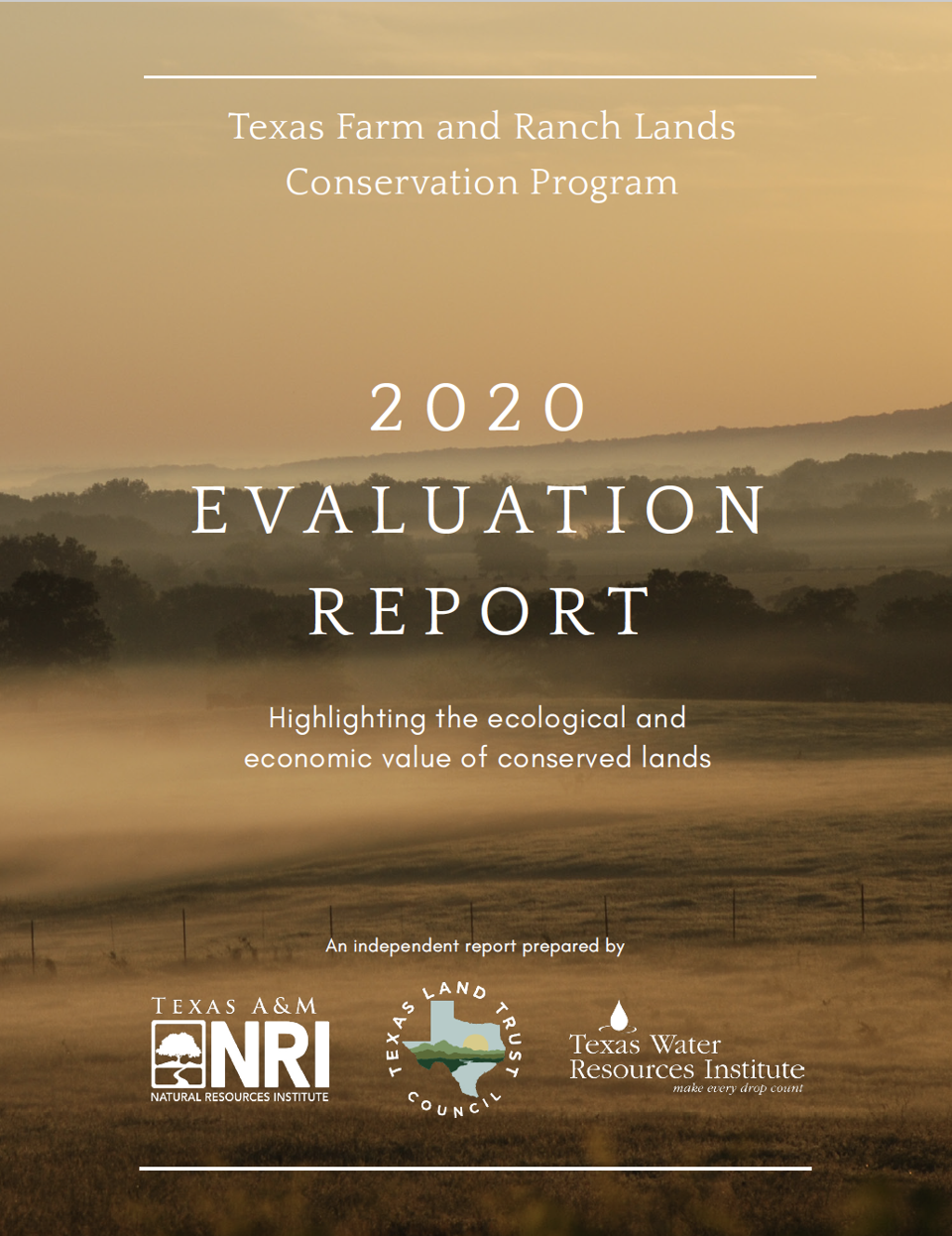

Texas farm and ranch land conservation program publishes evaluation report
November 12, 2020
The vast expanse of Texas lends itself to encompass some of the most diverse and ecologically rich landscapes in the United States. Much of the land is characterized as open-space and falls under the designation of privately-owned working lands, or farms, ranches, and forestlands that support agricultural systems, foster healthy environments, and support recreational and other intrinsic needs. Despite their importance, working lands in Texas are under threat of increasing land conversion and fragmentation pressure, due in large part to rapid population growth and rising land market values.
To help safeguard the public benefits derived from working lands, the Texas Legislature created the Texas Farm and Ranch Lands Conservation Program (TFRLCP, or hereafter, the Program) in 2005, with the purpose of funding agricultural conservation easements on private lands. Conservation easements are a voluntary tool that support the permanent conservation of private lands—through perpetually restricting development rights on contracted properties while enabling the continuation of agricultural practices. The goal of this report was to examine the conservation easements executed under the TFRLCP. Specifically, we evaluate ecological and economic values secured through the protection of these properties as well as the fiscal efficiency of state funds to protect working lands with high agricultural value at a relatively low cost for state residents.
Learn More
Conservation valuations
Evaluating a statewide conservation program that protects private working lands


 Texas farm and ranch lands conservation program 2020 evaluation report
Texas farm and ranch lands conservation program 2020 evaluation report






